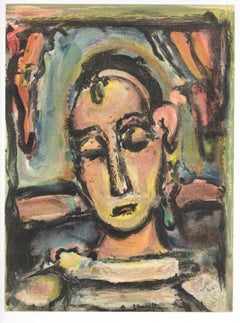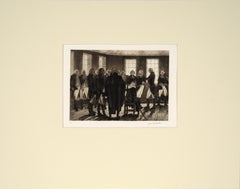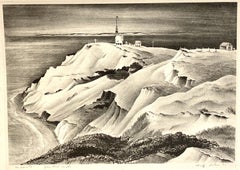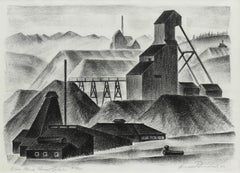1930s Prints and Multiples
1930s Prints and Multiples
Lithograph
American Impressionist 1930s Prints and Multiples
Laid Paper, Etching
Academic 1930s Prints and Multiples
Etching
Modern 1930s Prints and Multiples
Woodcut
American Modern 1930s Prints and Multiples
Lithograph
American Modern 1930s Prints and Multiples
Lithograph
1930s Prints and Multiples
Paper, Lithograph
Surrealist 1930s Prints and Multiples
Paper, Stencil
Art Deco 1930s Prints and Multiples
Paper, Wood
Modern 1930s Prints and Multiples
Linocut
Modern 1930s Prints and Multiples
Woodcut
Art Deco 1930s Prints and Multiples
Lithograph
1930s Prints and Multiples
Etching
Ashcan School 1930s Prints and Multiples
Etching
1930s Prints and Multiples
Engraving
1930s Prints and Multiples
Linen, Paper, Lithograph
Fauvist 1930s Prints and Multiples
Lithograph
Fauvist 1930s Prints and Multiples
Lithograph, Linocut
1930s Prints and Multiples
Lithograph
Surrealist 1930s Prints and Multiples
Lithograph
1930s Prints and Multiples
Paper, Lithograph
Modern 1930s Prints and Multiples
Drypoint, Etching
Art Deco 1930s Prints and Multiples
Paper, Lithograph
Academic 1930s Prints and Multiples
Etching
Modern 1930s Prints and Multiples
Lithograph
Naturalistic 1930s Prints and Multiples
Lithograph
1930s Prints and Multiples
Paper, Color, Etching
American Modern 1930s Prints and Multiples
Lithograph
Surrealist 1930s Prints and Multiples
Lithograph
Post-Impressionist 1930s Prints and Multiples
Lithograph
Other Art Style 1930s Prints and Multiples
Lithograph
Modern 1930s Prints and Multiples
Lithograph
American Realist 1930s Prints and Multiples
Linocut
American Modern 1930s Prints and Multiples
Lithograph
Modern 1930s Prints and Multiples
Lithograph
Modern 1930s Prints and Multiples
Etching
Modern 1930s Prints and Multiples
Etching
American Modern 1930s Prints and Multiples
Etching
Modern 1930s Prints and Multiples
Woodcut
1930s Prints and Multiples
Etching
Modern 1930s Prints and Multiples
Lithograph
Modern 1930s Prints and Multiples
Etching
Surrealist 1930s Prints and Multiples
Lithograph
Modern 1930s Prints and Multiples
Canvas, Oil
Art Nouveau 1930s Prints and Multiples
Lithograph
Modern 1930s Prints and Multiples
Etching
1930s Prints and Multiples
Paper, Lithograph
Art Deco 1930s Prints and Multiples
Lithograph
1930s Prints and Multiples
Etching
1930s Prints and Multiples
Lithograph
Abstract 1930s Prints and Multiples
Woodcut
Modern 1930s Prints and Multiples
Woodcut
1930s Prints and Multiples
Lithograph
Post-Impressionist 1930s Prints and Multiples
Lithograph
Cubist 1930s Prints and Multiples
Lithograph
1930s Prints and Multiples
Lithograph, Stencil
Surrealist 1930s Prints and Multiples
Drypoint
Cubist 1930s Prints and Multiples
Lithograph
Modern 1930s Prints and Multiples
Drypoint, Etching
Constructivist 1930s Prints and Multiples
Lithograph
Read More
Revisiting Robert Rauschenberg’s Creative Rebellion on His 100th Birthday
A planet-wide celebration feels fitting for an artist who saw connections everywhere: between paint and photography, art and life, self and surroundings.
Red Grooms’s 3D Tugboat Is a Chaotic, Comic Take on New York Life
The sculptural lithograph is part of the inimitable artist’s “Ruckus” series, now on view at the Brooklyn Museum.
Joan Mitchell’s Rare, Late-Career Diptych Buzzes with Life
Beneath the inky blackness, the painter’s irrepressible energy electrifies this pair of intaglio prints.
The 1stDibs Guide to Types of Abstract Art
Get to know the key movements and artists who have influenced visual culture for more than a century.
Romare Bearden’s Humanity Infuses His Bright, Bold Art
Through collage, painting and printmaking, the artist foregrounded Black life in America in revolutionary new ways.
Andy Warhol and Suzie Frankfurt’s ‘Wild Raspberries’ Cookbook Is an Artful, Fanciful Delight
This set of recipes and original prints might not make you a better chef. But it will make you smile.
Art Brings the Drama in These Intriguing 1stDibs 50 Spaces
The world’s top designers explain how they display art to elicit the natural (and supernatural) energy of home interiors.
Welcome (Back) to the Wild, Wonderful World of Walasse Ting
Americans are rediscovering the globe-trotting painter and poet, who was connected to all sorts of art movements across a long and varied career.




